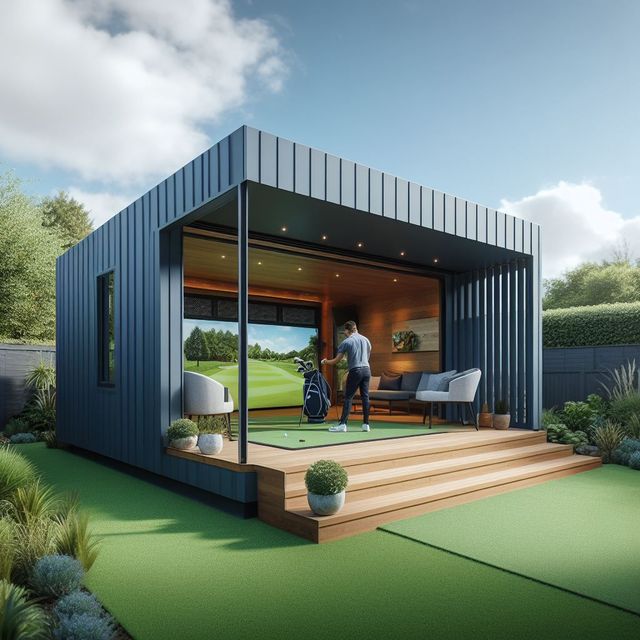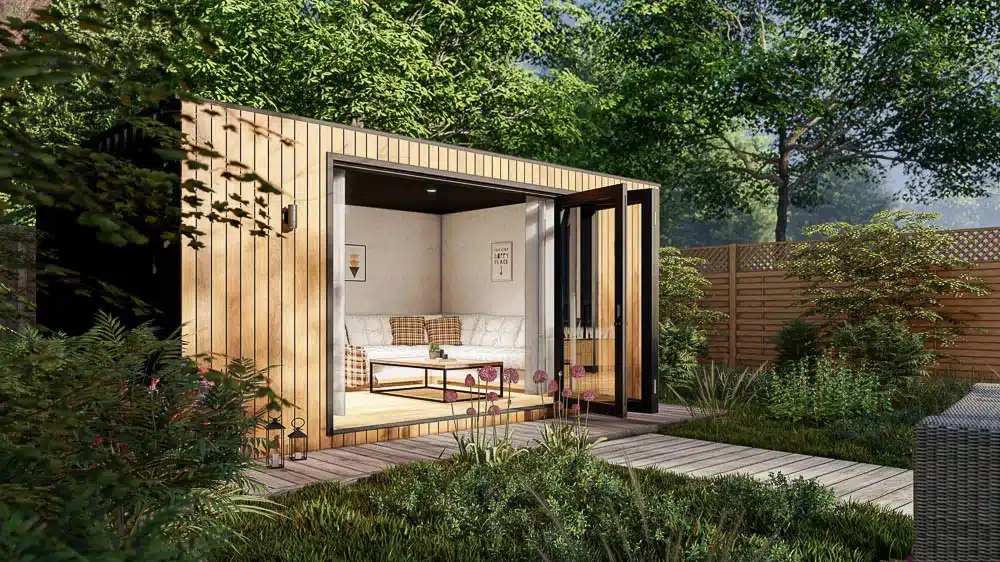Great Ideas On Planning Permission On Garden Conservatories
Wiki Article
What Is The Permission For Planning Required For Garden Rooms And Other Modifications To The Use Of Space?
If you're building conservatories, garden rooms, outhouses, or garden offices and extensions and extensions, the "change of use" concept is essential to determine if the need for a planning permit is necessary. The planning permission is needed for changes in use.
If you are planning to convert an existing non-residential building (like garages or agricultural building) into a dwelling or garden office the planning permission is usually required. This is because it is a change of use class for the structure.
Garden Rooms: Living Space
A room that is used in the garden to function as an independent living space (e.g. guest house, rental unit) is considered to be a alteration of the use. In order to ensure that the structure is in compliance with residential regulations and standards Planning permission is required.
Business Use:
If you intend to utilize the garden space or conservatory for business reasons (e.g. use it as an office for an office-based business at home that has frequent visitors or employees) Planning permission may be needed. This is because of the impact that it could have on the surrounding neighborhood, which includes traffic and noise as well as parking.
Educational or Community Use
Planning permits are required to permit the conversion of a garden-building to an educational or community space (such as a classroom, meeting hall, or auditorium). The local authorities will consider the suitability of location and the impact it has on the area around it.
Impact on Local infrastructure
In general, any alteration of use that affects the local infrastructure (such as drainage, roads or public services) requires planning approval. Local planning authorities will assess the impact of these changes as part the process of applying for permission.
Dual Use:
Planning permits are required for properties with a mixed-use (part commercial, part residential) to define and regulate the various uses of the property.
An increase in footfall, traffic, and revenue
If the proposed change in use is likely to boost traffic or footfall (e.g. changing the garden into a small retail space), planning permission is required to deal with possible impacts to the area.
Building Regulations Compliant:
Although not strictly an issue planning permissions, any change in usage must conform to building regulations for security as well as health and energy efficiency standards. This is important in the process of converting areas into habitable ones.
Environmental Impact:
Planning approval is required for all changes to use that may be detrimental to the environment. Examples include converting agricultural land to residential uses. An environmental assessment may be required as part of an application.
Impact of Community Amenities on Communities:
The most important consideration is the impact of the plan on the local population and its culture. To ensure that the project is compatible with community plans and that local amenities are preserved The conversion of a garden into a cafe requires planning permission.
The following areas are identified as:
In areas designated as conservation zones, National Parks, or Areas of Outstanding Natural Beauty (AONB) modifications of use are subject to stricter control to ensure the integrity and appearance of the region. This is the reason why planning permission will be required.
Local Planning Policies
Local planning authorities have rules that differ in terms of how they manage changes to their use. These policies are essential in understanding the changes that require approval and the criteria that need to be fulfilled.
In short the typical planning permit is required for any significant change of use of a garden space, conservatory, outhouse, garden office or extension. This is to ensure that the proposed purpose is compatible with the location, complies with local and national planning policies, and addresses any potential impacts on the environment and community. Early consultation with the local planning authority is essential to establish specific requirements and to obtain approvals. View the best maximum garden room size without planning for more tips including how to lay decking on soil, composite garden rooms, copyright garden room, copyright garden buildings, what size garden room without planning permission, best electric heater for cabin, composite garden rooms, copyright outbuildings, outhouse building, best electric heater for cabin and more.

Regarding Listed Buildings, What Kind Of Planning Permit Are You Required To Obtain For Garden Rooms, Etc?
The design of garden rooms outhouses, conservatories, and garden rooms as well as garden offices or extensions within the grounds of listed buildings requires special considerations. The stricter regulations also apply. These are the major factors to consider when planning permissions are required for such projects. Listed Building Consent
Typically, alterations, extensions, or new structures within the boundaries of a building that is designated requires listed building consent as well as planning approval. The changes can alter the unique character of the listed building.
The impact on the character of historic buildings
An application for planning is required for any construction or extension which could alter the historic nature of the property listed or its setting. This includes garden rooms and outbuildings.
Materials and Design
The style and material of the proposed structure must be compatible with the architectural and historical significance of the listed building. It could be necessary to employ traditional materials and custom designs, which may require permission for the design.
Proximity to the listed building:
New constructions that are built near the historic building will be inspected for their impact on the setting and appearance of the heritage asset. If they are to not alter the character of the building, planning permission will need to be obtained.
Size and Scale
The garden room size or conservatory size extension size must be in line with the listed building. A larger structure is more likely to require extensive assessment and a planning permit.
Location:
The position (whether it is in front, behind or behind the listed structure) could affect the need for a permit. The locations that are prominent or have a significant influence on the building's main views will typically be the subject of a thorough examination.
Internal Changes:
Even if you are removing the old structure, any internal changes that will be made to the building must also have planning approval and listed building consent.
Conservation Areas that Overlap
There are additional restrictions if the building is listed and located in the conservation area. To ensure that the building is in compliance with the listed building regulations as well as conservation area regulations Planning permission is required.
The use of the building
Planning permission could be required depending on what the garden space or outbuilding is intended to be used for. The uses that require a substantial shift, like residential accommodation or commercial usage will be scrutinized more thoroughly.
Structural Impact:
Any construction that could alter the structural integrity listed buildings require approval for planning and listed-building permission. This will ensure that both existing and new structures are able to be safely integrated.
Local Authority Guidelines
Local authorities typically have guidelines for listed buildings that outline the kind and amount of changes and construction that are permitted. These guidelines can only be implemented with permission from the planning department.
Professional Assessments
Conservationists typically conduct detailed assessments when evaluating proposals to work on listed structures. These assessments help decide if the proposed work is in line with the building's requirements and be a part of any application for planning permission.
As a general rule It is generally necessary to obtain planning permission and a listed construction consent when constructing extensions gardens, conservatories or garden rooms and outhouses as well as conservatories attached to listed buildings. Early consultation with your local heritage experts and planning authority is vital to ensure that all regulations are followed and the historical and architectural integrity of a building is maintained. View the recommended a conservatory room for more advice including what size garden room without planning permission, ground screws vs concrete base, herts garden rooms, what size garden room without planning permission, composite garden rooms, copyright outbuildings, do i need planning permission for a garden room with toilet, garden room planning permission, copyright garden room, outhouse buildings and more.

What Kind Of Planning Permission Is Required For Garden Rooms And So On.?
Planning permission may be needed for the construction of gardens, outhouses, or gardens offices. The infrastructure and utilities are other important aspects to consider. Here are some of the most important aspects to consider water supply and drainage:
A permit for planning may be required for connecting a new structure to the water or drainage systems. Local water authorities might need to evaluate the impact of the new structure on the supply of water or sewage systems.
Gas and Electricity Connections
If you are planning to connect your new construction to an electricity or gas supply, you might require an approval for planning. Conformity with building regulations and safety standards is essential to connect these lines.
Utility Easements
Planning permission could be required if the proposed structure is situated in an area that is designated for infrastructure and utilities. It could be required that the utility company in your area authorize construction within these areas.
Septic Tanks and Sewage Systems
A permit for planning is required for any new construction that requires a septic or an onsite sewer treatment system. These systems must comply with the environmental and health standards.
Drainage and Surface Water Management:
You might need planning permission for drainage and runoff from surface waters. To stop erosion and flooding and water pollution, it may be required to implement specific measures.
Access to Utilities for Construction
A planning permit may be required for access to utilities that are temporary such as water during construction. Temporary connections must comply with the environmental and safety standards.
Impact on Infrastructure Local:
The local authority must evaluate whether the infrastructure in place can be used to support the development. This includes utilities, roads and public services. Local authorities will determine the infrastructure that is in place and whether it is able to be used to support the expansion.
Waste Management and Recycling:
Planning permission may involve requirements for waste management and recycling during and after construction. In order to minimize environmental impacts, there must have provisions in place for recycling and waste disposal.
Energy Efficiency:
It could be necessary to obtain planning approval prior to installing energy-efficient systems or renewable energy sources (such solar panels or heat pumps) in your new building. Building regulations and environmental standards must be adhered to.
Telecommunications and Internet connectivity:
Planning approval is required for any new structures that require telecommunications or Internet connections. In order to make sure that telecommunications infrastructure is compliant with the requirements and standards, it is vital that the infrastructure adheres to these.
Access to Footpaths and Roads:
The creation or modification of access roads or pedestrian routes for a new building may require permission for planning. When building roads and paths, it is vital to meet safety guidelines.
Accessibility to Public Transport:
Planning permission is needed when the structure is going to affect public transport facilities like bus stations or train stations. It is essential to be in compliance with the regulations and standards for infrastructure in public transport.
The infrastructure and utilities are key factors that decide the need for planning permission. is required for conservatories, garden offices, outhouses or garden rooms. An early consultation with the local authority is crucial to ensure compliance with all applicable regulations and standards. See the top rated cedar wood garden rooms for site tips including garden room heater, garden rooms near me, ground screws vs concrete base, outhouse buildings, outhouse garden, garden rooms near me, outhouses for garden, garden rooms near me, garden rooms hertfordshire, outhouse garden rooms and more.
